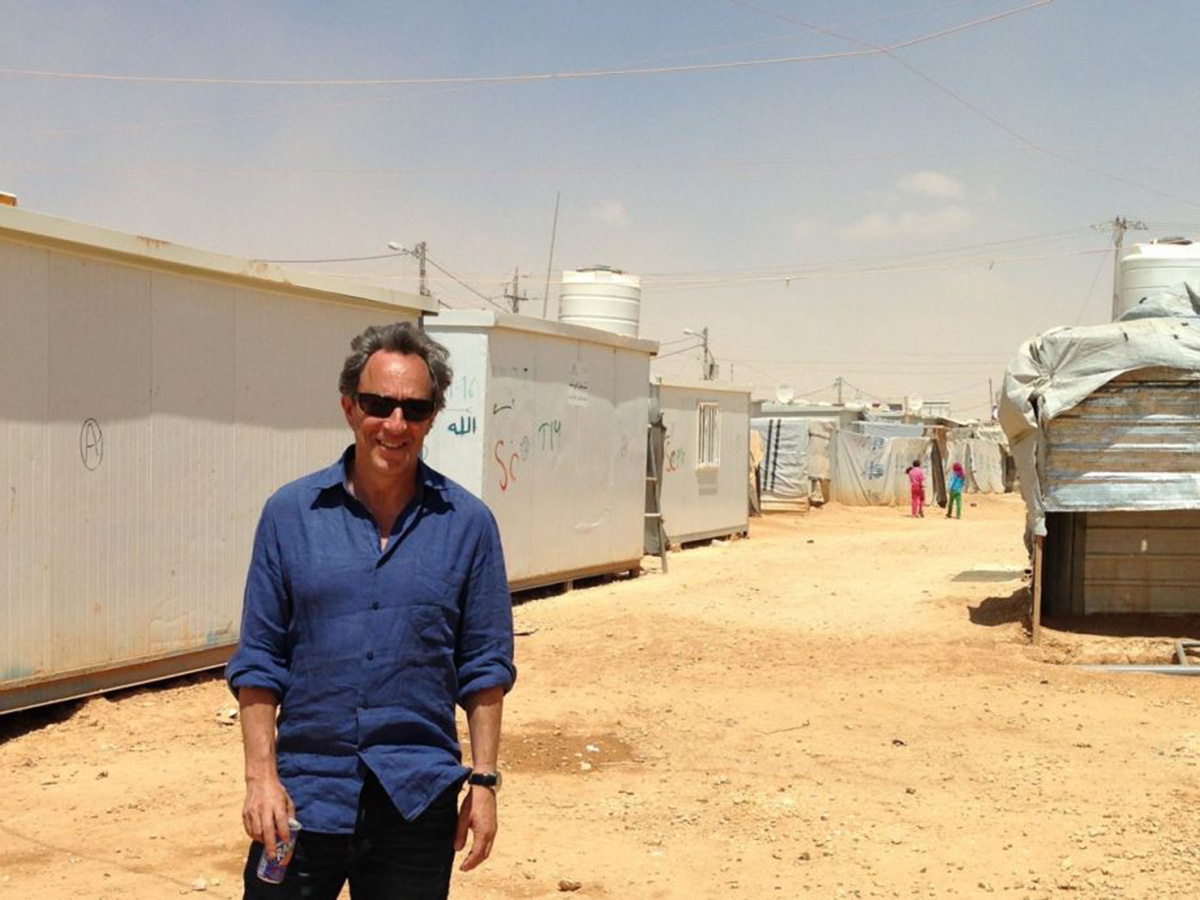Submitted by WA Contents
Architecture Critic Michael Kimmelman Talks Pop-Up Cities
United States Architecture News - Jul 17, 2015 - 15:42 4200 views

New York Times architecture critic Michael Kimmelman in Zaatari, which is home to thousands of Syrian refugees in Jordan; image via Next City.
Next week, New York Times architecture critic Michael Kimmelman will moderate the Times’ Cities for Tomorrow conference. The event (Next City is a media partner) will feature urban experts from across the country in conversation about the future of cities. I spoke to Kimmelman about his experiences in the Middle East, resilience and the innate human impulse to urbanize.
You will be moderating a panel about cities like Zaatari, a very large, fast-growing makeshift city that was created by the UN to shelter refugees during the Syrian conflict. Are there lessons that NYC can learn from Zaatari?
I was in Zaatari last year. One of the really remarkable things about it is that for a while it was the most godforsaken spot on earth. But within a year or two, it became a kind of thriving city. I say “kind of” because, as a refugee camp, it’s still populated by people who don’t want to be there. People are there because they have no place else to go. But these people had made Zaatari into the city that they wanted it to be by dint of sheer inventiveness and will. They were motivated by what I believe is a basic human desire to urbanize. And that’s probably the most powerful lesson for New York about Zaatari. It’s also a lesson that is important for cities and refugee camps everywhere. Zaatari showed that people wanted to be in neighborhoods, with commercial streets and homes that were grouped along streets with sidewalks and electricity and basic services. People wanted to create a sense of shared urban life that felt normal. That sense of urbanization as a humane and basic way of living is very powerfully demonstrated there. I mean, these people had been farmers. They didn’t necessarily come from cities. But they saw that this was a place that could become a kind of pop-up city. So, it’s not a perfect place. But it’s also very far from what it had been when it opened, which was chaotic and violent.
Was there a small group of organizers?
It was extremely anarchic in the beginning, and there was a lot of corruption and gangs, and all these changes were technically illegal. But what happened was that the people who ran the camp came to realize that they could work with the gangs and others who were bringing in illegal materials or stealing electricity in order to create a better situation for everybody. And so, the guy who ran the camp, instead of somebody in charge of a massive emergency relief site, became a kind of mayor, of a spontaneous city. So a form of governance began to replace what had been the chaos and anarchy at the beginning......Continue Reading
> via nextcity.org